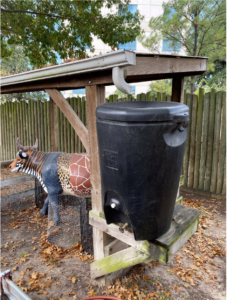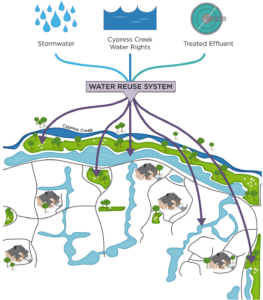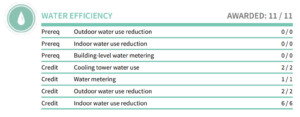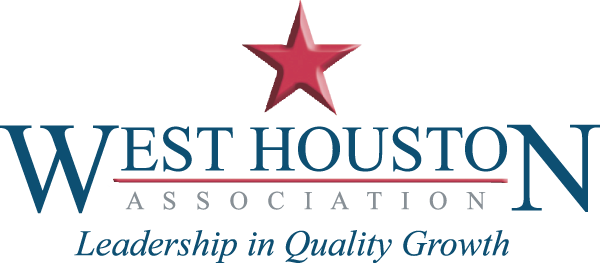
Rainwater harvesting at the Houston Zoo
In a world where water scarcity looms large on the horizon and environmental sustainability is paramount, developers, owners, MUDs and local governments are seeking different sources of water supply. Locally, as the cost of water increases and concerns about subsidence from aquifer over-utilization increase, there is a growing need to seek alternatives. Two sustainable options gaining acceptance are water reuse and rainwater harvesting.
This ancient practice of rainwater harvesting is gaining serious consideration- modernized and adapted for contemporary needs. From residential homes and developments to towering commercial and industrial edifices, rainwater harvesting is emerging as a serious option.
At its core, rainwater harvesting entails the collection, storage, and utilization of rainwater runoff. This seemingly simple concept carries immense significance, particularly in commercial and industrial settings where water demand can be staggering. In these environments, rainwater harvesting systems serve as invaluable assets, offering a decentralized water supply reducing reliance on centralized water distribution networks. This not only alleviates pressure on municipal water sources and reduces water bills but also mitigates the risk of water shortages during periods of drought or infrastructure failures.
Locally, there are numerous innovative solutions that are being proposed, from the Houston Public Works Rain Barrel Program encouraging rainwater collection in neighborhoods like the Heights and Montrose, to the innovative approach adopted by Grundfos in their USA Headquarters in Brookshire, Texas. Grundfos adopted a sophisticated rainwater harvesting system that captures and stores rainwater from the expansive roof surfaces, to meet a substantial portion of its non-potable water demands, including landscape irrigation, non-potable water use within the building, and cooling tower replenishment.

How purple pipes allow for water re-use in Bridgeland
Other interesting rainwater harvesting ideas include the use of stormwater detention ponds within developments such as Bridgeland as a source of irrigation water for their Purple Pipe system, which allows the capture and reuse of rainfall. There’s also the Houston Zoo’s installation of rainwater collection systems which, to date, have primarily been used in the back areas of the Zoo to assist with irrigation and washdown of animal areas.
These initiatives not only reduce the reliance on municipal water sources but also serve as models for sustainable water management in multiple types of developments. These decentralized rainwater harvesting systems not only conserve precious freshwater resources but also help mitigate urban flooding by reducing stormwater runoff. They also can represent significant cost savings by reducing the amount of water purchased.
There is significant economic value in rainwater harvesting in commercial and industrial buildings. By capturing rainwater for non-potable uses such as irrigation, cooling systems, and toilet flushing, businesses can substantially lower their water bills and operational costs. Furthermore, investing in rainwater harvesting infrastructure often yields long-term financial returns through reduced reliance on municipal water services and potential rebates or incentives for sustainable practices.
Beyond economic considerations, rainwater harvesting plays a pivotal role in sustainability through environmental conservation. By intercepting rainwater before it becomes stormwater runoff laden with pollutants, these systems help mitigate urban flooding and minimize water contamination. In essence, rainwater harvesting fosters a symbiotic relationship between human activities and the natural environment, promoting resilience and sustainability in the face of climatic uncertainties.

From Grundfos LEED Certification Scorecard
Rainwater harvesting is not merely a standalone solution but an integral component of broader sustainable infrastructure frameworks, including recognition such as LEED Certification. Water Efficiency represents a full 10% of the points available for LEED Certification and Grundfos has demonstrated locally that it is possible to capture all 11 points on offer significantly assisting them in obtaining their new USA Headquarters LEED Platinum Certification in 2022.
Significantly, the scalability and adaptability of rainwater harvesting make it suitable for a wide range of applications, from small-scale residential installations to sprawling industrial complexes. By embracing this decentralized approach to water management, communities can foster self-sufficiency, resilience, and resource efficiency, thereby laying the groundwork for a more sustainable future.
In conclusion, rainwater harvesting is gaining significant exposure as drinking water becomes more scarce and expensive, offering a pragmatic solution for residential, commercial and industrial settings, where water demand is immense and resources are finite. Through rainwater harvesting, businesses can unlock economic savings, reduce environmental impact, and contribute to a more resilient and sustainable built environment. As we navigate the complexities of the 21st century, rainwater harvesting deserves serious consideration for responsible water stewardship and sustainable development.

Written by Maurice Mullaly
Sustainable Infrastructure Committee
Published April 1, 2024
